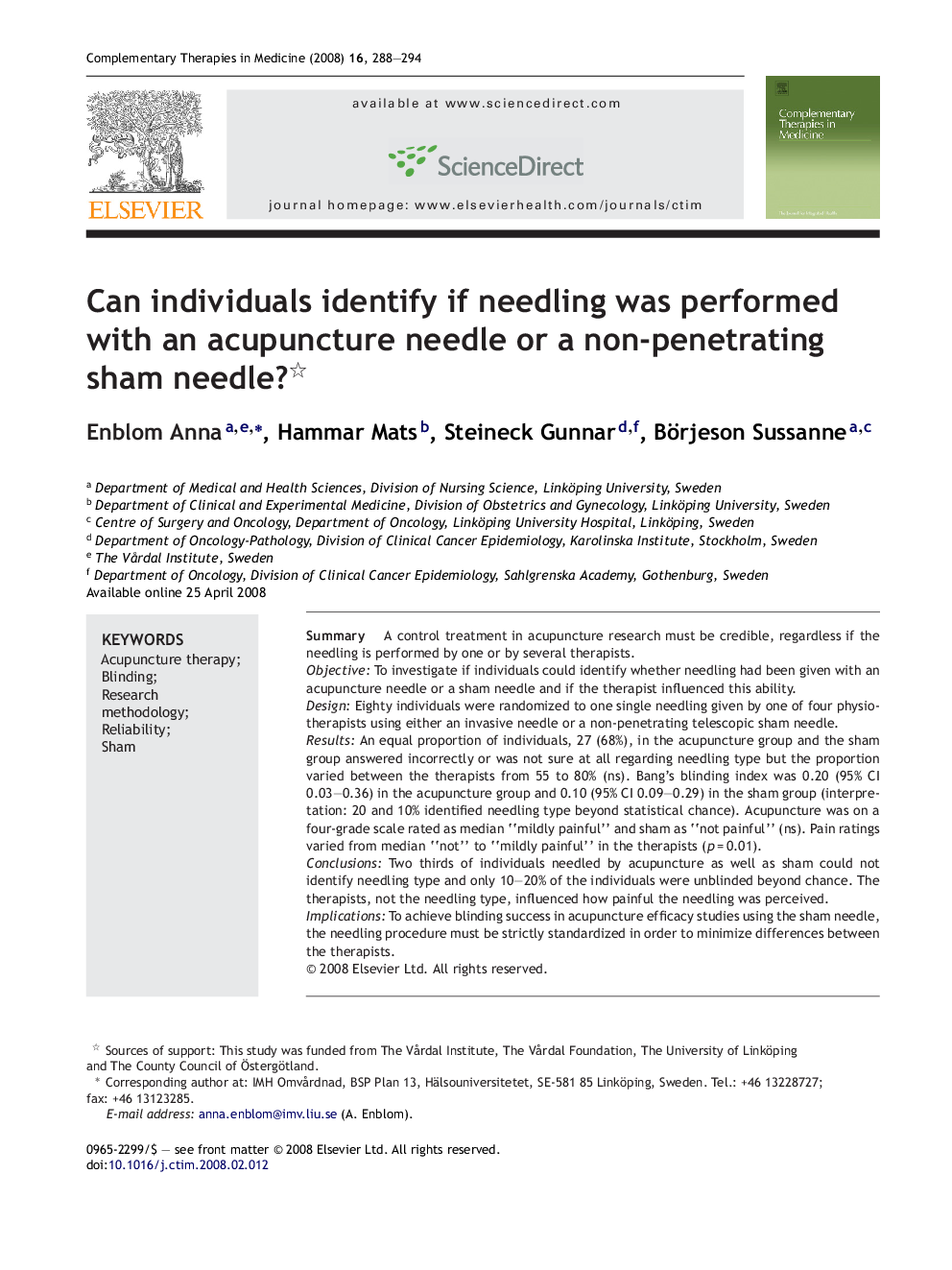| Article ID | Journal | Published Year | Pages | File Type |
|---|---|---|---|---|
| 2629223 | Complementary Therapies in Medicine | 2008 | 7 Pages |
SummaryA control treatment in acupuncture research must be credible, regardless if the needling is performed by one or by several therapists.ObjectiveTo investigate if individuals could identify whether needling had been given with an acupuncture needle or a sham needle and if the therapist influenced this ability.DesignEighty individuals were randomized to one single needling given by one of four physiotherapists using either an invasive needle or a non-penetrating telescopic sham needle.ResultsAn equal proportion of individuals, 27 (68%), in the acupuncture group and the sham group answered incorrectly or was not sure at all regarding needling type but the proportion varied between the therapists from 55 to 80% (ns). Bang's blinding index was 0.20 (95% CI 0.03–0.36) in the acupuncture group and 0.10 (95% CI 0.09–0.29) in the sham group (interpretation: 20 and 10% identified needling type beyond statistical chance). Acupuncture was on a four-grade scale rated as median “mildly painful” and sham as “not painful” (ns). Pain ratings varied from median “not” to “mildly painful” in the therapists (p = 0.01).ConclusionsTwo thirds of individuals needled by acupuncture as well as sham could not identify needling type and only 10–20% of the individuals were unblinded beyond chance. The therapists, not the needling type, influenced how painful the needling was perceived.ImplicationsTo achieve blinding success in acupuncture efficacy studies using the sham needle, the needling procedure must be strictly standardized in order to minimize differences between the therapists.
